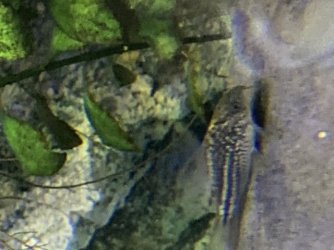I wasn't suggesting you are falling victim to consumerism. I was more thinking of myself, before I took the time to learn about the nitrogen cycle, when I used an internal Fluval U4, and didn't understand the function of its various parts, and slowly cultivated a nitrate factory. I'm not referring to anyone who has taken the time to do their research properly; it's just that the standard instructions on most canister filters defy logic, and that's what some people go by, when they're just setting up a tank for the kids (i.e. me, a few years ago, for example).Most of the biggest experts (though too humble to ever label themselves as such) on this site - Colin, Byron, Abbey'sdad, have just given you advise to change (more) water. You do seem to appreciate them taking the time to explain, but I'm not sure you accept it.
The consistent advise on TFF is free and low tech. Use sponge filteration and live plants, do large regular water changes with minimal chemicals and treatments. Why do you think we are the ones that are falling victim to consumerism?
What I'm saying is that there is a viable way to ensure your tank cycles waste into nitrogen gas, via the anaerobic cultures that develop inside the Biohome Ultimate. I believe this is a step in the right direction. I do perform water changes, but not to control nitrate or phosphate levels, because that part is taken care of. If I could afford a sump system, I would go down that route—I may in the future—but I feel that genuine advances in water maintenance are being made, then swept aside in favour of older methods. The anaerobic stage of the cycle which is being dubbed impossible is established inside my filter, and I don't understand why that's bothersome.



